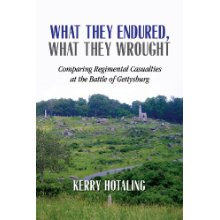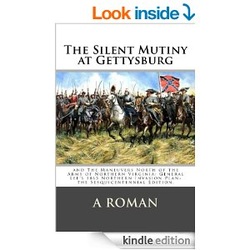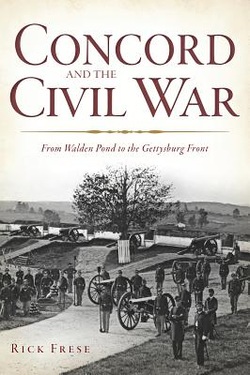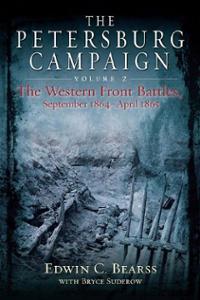
Kerry Hotaling
Outskirts Press, 2013, 84 pages, $10.95
Image courtesy of oldbonessearch.com
ISBN: 978-1-4787-0340-2
This work is a study on comparing the regimental strengths and losses during the Gettysburg Campaign and while the title is intriguing, it is a bit misleading as to the cause of the book. By comparing the numbers and losses, I thought the work to be an analysis on what it would be like to see what casualties the 24th Michigan inflicted on the 26th North Carolina along with many other regiments who had famous duels at Gettysburg. Instead, there was a list of regiments with high percentage losses, some of which were not as clearly labeled as others, and a statement that it would never be a complete work. What this small study is, however, is a general statement on what happened during the first day at the Battle of Gettysburg.
Kerry Hotaling is a land surveyor in Western Massachusetts and is a self proclaimed Gettysburg buff. He is a member of the Gettysburg Foundation along with membership to the Civil War Trust. He is also very involved in youth sports while volunteering to replace many wooden fences on the Gettysburg Battlefield.
The hope for this work is to create an analytical study of the regimental losses at Gettysburg which has also been done in other major works on the battle. Hotaling took a different approach, however, by making lists of the worst regimental deaths, wounded and captured throughout the battle. While this is an interesting concept, it is something which Hotaling does in his work but losses the feeling of comparing regimental casualties. He focuses on day one of battle which is some of the worse combat throughout the battle, which is why mentions these regiments. However, he talks about the 26th North Carolina as fighting only in day one of combat forgetting that they would take part in Pickett’s Charge later on in the third day of fighting. There are also some of the Union regiments who are mentioned in the first day that take part in the second and third day of battle mainly on the area of Culp’s Hill and Cemetery Hill and are lightly engaged. The First and Eleventh Corps are only mentioned in the lists which is a study in itself. But since this work is supposed to be on the comparison of the regimental strengths and losses at Gettysburg, the purpose of this work is left in the rearview mirror. The desire to see what this study could have been is something I would still like to see and I hold the hope of a second edition. The presentation of the book is one of the saving graces of what this work is. The only negative on the presentation is the lack of the footnotes for the sources he uses throughout the text.
What They Endured, What They Wrought is the beginning of a study into the comparison of the regimental losses at the Battle of Gettysburg. However, this book is not what it says it is and therefore should not be called what it is. Some of the facts within the text are incorrect when considering the Eleventh Corps and the 154th New York. Along with that, the bibliography at first glance is missing the Official Records, but they are used as parentheticals throughout the text which is not professional in the historical field. The use of footnotes is more desirable than what has happened here. This may be more of an editorial issue than something the author has done in his work. With the hopes of a second edition, much more expanded than the first edition, I hope that the means of this work is not lost in the translation of what is needed. Listing off what regiments did during the battle is not comparing the regimental losses at Gettysburg. What we have here is more of a stud on the first day of combat than a comparison of the regimental losses at Gettysburg.




 RSS Feed
RSS Feed
